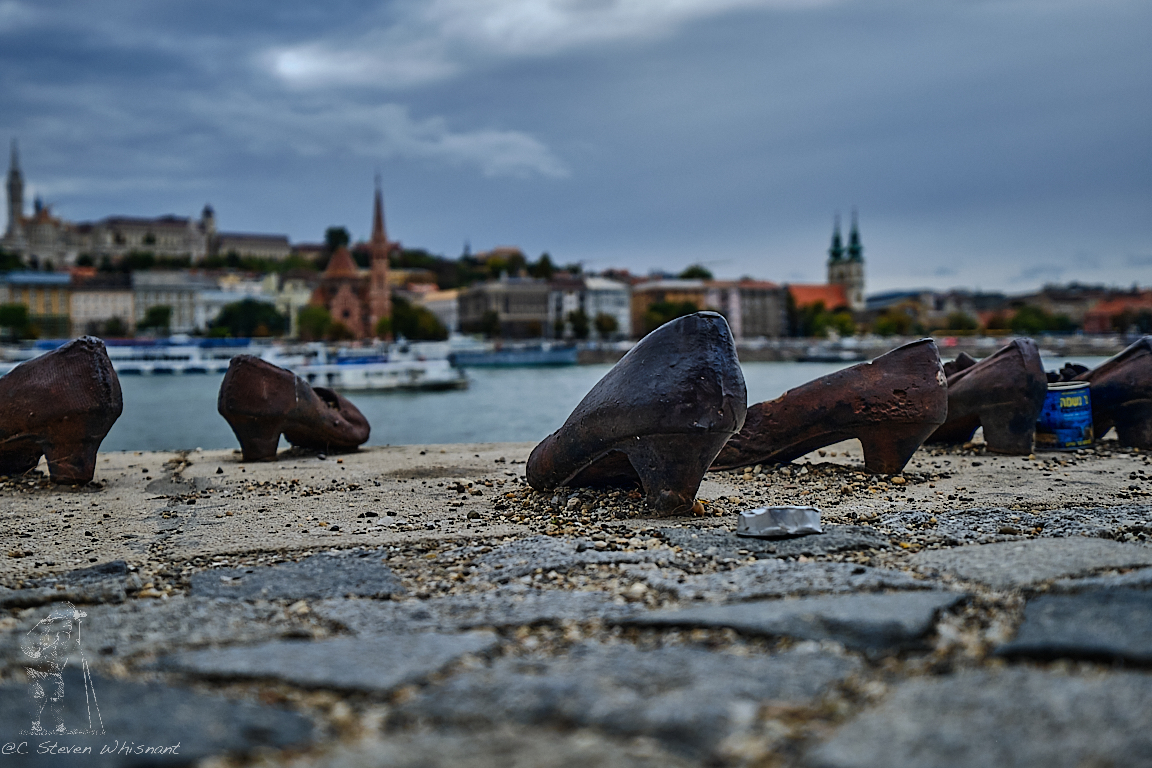In the archeological expedition that turned up the previously unposted 2019 tour of the Parliament building, I also found unposted images of a memorial located on the Pest side of the Danube River. These are posted below.
Above is the view of the Buda shore as seen from Pest. In this view, in addition to seeing St. Matthias' Church (blogged) and the sundry former royal residence buildings, there is church in the foreground on the right facing to the right with its twin towers that faces Batthany Square. Farther to the right, out of the image is Bem József tér where throngs of people gathered on in October 1956 in a march that marked the beginning of the ill fated revolution.
On the near side of the river is an memorial that was installed in 2005. It remembers an earlier episode between 15 October 1944 and 28 March 1945 when the far-right ultra-nationalist Arrow Cross Party formed the government power. Wikipedia tells us that this memorial was...
Conceived by film director Can Togay, he created it on the east bank of the Danube River with sculptor Gyula Pauer to honour the Jews who were massacred by Fascist Hungarian militia belonging to the Arrow Cross Party in Budapest during the Second World War. They were ordered to take off their shoes (shoes were valuable and could be stolen and resold by the militia after the massacre), and were shot at the edge of the water so that their bodies fell into the river and were carried away. The memorial represents their shoes left behind on the bank.
While the first image above of the Buda shoreline feels historic and grand, the image below, seen from the perspective of the shoes feels very much less so.
What an awful, bloody place this must have been at the time when so many were being killed here.
As you can see below, people still come to light candles and tie ribbons to honor those who died here.
And today, within sight of this powerful memorial moor the boats of modern commerce and tourism. The river flows with continued indifference to the light-hearted tourists and the many dead it has carried away.
Most of the murders along the edge of the River Danube took place around December 1944 and January 1945, when the members of the Hungarian Arrow Cross Party police ("Nyilas") took as many as 20,000 Jews from the newly established Budapest ghetto and executed them along the river bank.[4]
This beautiful city has many dark corners that one can easily find. Any place with a history of more than a few years will also harbor disturbing episodes. But standing at the crossroads of Nazi, Soviet, and Austro-Hungarian Empires, this place has seen more than its share.






No comments:
Post a Comment
We enjoy hearing from our readers.